A helmet is a protective gear worn to reduce the risk of severe brain and head injuries during a head collision. There are six types of helmets used for specific riding conditions, with half and full helmets being the most popular.
Many riders often find it challenging to choose among these two for various associated reasons. The half face helmet allows free airflow with 100% visibility, while a full helmet gives you more protection. So, in this article, we will compare the half helmet vs. full helmet to ascertain the better one. We will also look at other helmet types that motorcyclists use.
Half Helmet Vs Full Helmet: Comparison Chart
For the sake of a better understanding, let’s compare two helmets of the both types. We’ve selected the best half helmet and the best full helmet for this side by side comparison. Have a look:
| Image | 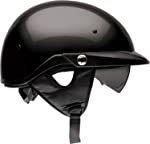 | 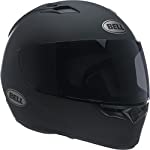 |
| Product | Bell Pit Boss Half Helmet | Bell Qualifier Full Face Helmet |
| Type | Half Helmet | Full Helmet |
| Protection and Safety | Provides a lower degree of protection and Safety. Not safe to ride with it in harsh weather conditions. | Offers a higher level of protection and safety with a full head shield and a chin-bar for face protection. You can ride with it even in harsh weather. |
| Freedom | Allows you to ride while keeping your face and neck cool. | Allows ventilation with only little air vents if closed the face shield |
| Fitness | Fits more commonly | Doesn’t fit very well |
| Comfort | Gives you more comfort Allows you to easily turn around at will, talk, and eat freely without the need to remove it. | Doesn’t give comfort. You may feel very uncomfortable riding with it for a longer duration, especially in harsh weather. |
| Design | You cannot customize it. | Has a larger surface and allows you to add more designs that suits your personality. |
| Weight | Lightweight | Heavyweight |
| Pros | t’s cooling and fun to ride with. Handier and easy to wear. Gives more comfort. | Gives a complete head and face shield. Cannot fly off even when speeding. Protects the eyes from dust and flying particles. |
| Cons | It’s less safe to ride with. Exposes the eyes to dust and other flying debris. Gives fun at first, but becomes louder with higher speed. | It’s heavy and less handy. Doesn’t give comfort. It can be suffocating to ride with it for a long time. |
| Price | Check Price | Check Price |
Half Helmet Vs Full Helmet – Which One Is Better?
Are you confused about choosing the right type of motorcycle helmet for your next ride? Here is a detailed comparison between a half and full helmet:
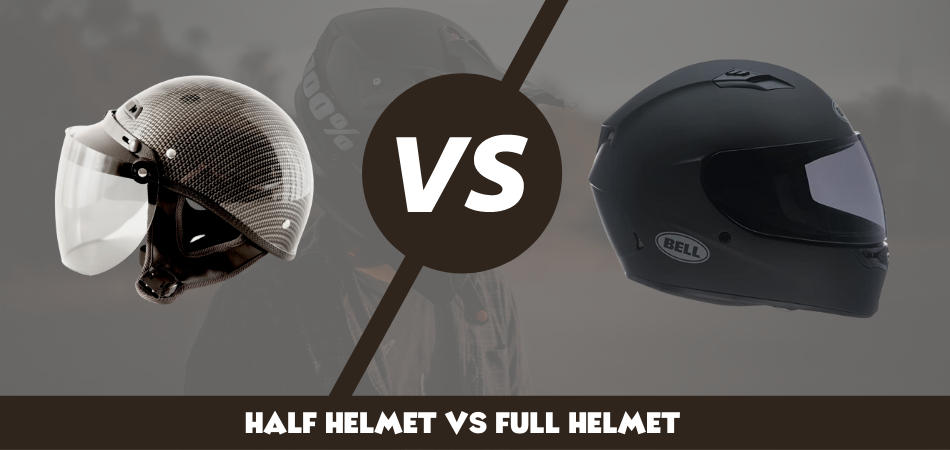
Freedom
- Half Helmet: The half helmet allows the riders to feel the cool breeze and have fun while riding. This is why most people who wish to cruise around prefer it.
- Full Helmet: The full helmet offers complete protection of both the head and face, with, however, only the air vent for air penetration. This may make you feel uncomfortable riding with it for a long-distance, especially in hot weather.
Fitness
- Half Helmet: The design of the half helmet fits more than the full helmet, probably as it exposes the rider’s face. It gives a smarter look.
- Full Helmet: The full helmet looks bulky. It gives complete coverage but doesn’t snug fit the head unless measured well.
Comfort
- Half Helmet: The half helmet lets you turn around and talk at will and freely. You don’t need to remove the helmet first. Its front is open, so you can easily stop by to have a drink.
- Full Helmet: You need to remove the helmet before you can talk or drink anything. Since the helmet is bulky, turning around while putting it on will not be that easy.
Protection and Safety
- Half Helmet: The first thing to consider while choosing a helmet is safety. Of course, the half helmet doesn’t offer a full face, head, and brain protection. As a result, it’s not the best for on-road and off-road riding.
- Full Helmet: This helmet type is the best when it comes to protection against injury. You can even ride with it in harsh weather conditions, although it’s not advisable to do so.
Design
- Half Helmet: The circumference is smaller, the front is open. There is no room for customization or branding.
- Full Helmet: The large or broader surface of this helmet type allows for customization. You can add more designs to it and customize it to a particular brand.
Weight
- Half Helmet: The half helmet is a product of lightweight materials. They are not as heavy as the full helmet, hence more handy and easy to wear.
- Full Helmet: They are stronger and heavier. The weight of the full helmet doesn’t allow the helmet to fall off your head while speeding.
Pros
- Half Helmet: Half helmet gives you a cool riding experience. It’s handier, easy to wear, and fun to cruise with while you have your head protected.
- Full Helmet: It’s regarded as the best in terms of safety, as it gives complete protection of the head and face. Its design protects the eyes from flying debris and dust.
Cons
- Half Helmet: You may sustain severe face injury during an accident. The half helmet gives a complete ear coverage, so the cool aeration could be fun at first, but becomes louder at a higher speed.
- Full Helmet: It’s heavy and gives no comfort. You can feel very uncomfortable riding on a long-distance with it.
Is Half or Full Helmet Better?
Both the half and full helmet types are best on different occasions with their unique features. The half helmet is ideal for a more conservative rider who wants to cruise at a low speed. The helmet is lightly weighted allows you to enjoy the sounds, cool breeze, and sights while riding. You will find it more comfortable to ride with as an occasional cruiser.
However, for unpredictable and long riders, the full helmet is a better option. The helmet guarantees you full head and face protection even in unfriendly weather conditions. It also allows you to customize your helmet and ride at high speed without fearing your helmet flying out.
Types of Motorcycle Helmet
In this section, we will be discussing the six different types of motorcycle helmets, as represented in the diagram below. They are;
1. Full Face Helmets:
This helmet covers the front, top, and back of the head. They give complete protection as compared to other helmet types. The full-face helmet is structurally strong with flip-up wind visors. In addition, it features optimized aerodynamics for various cycling positions.
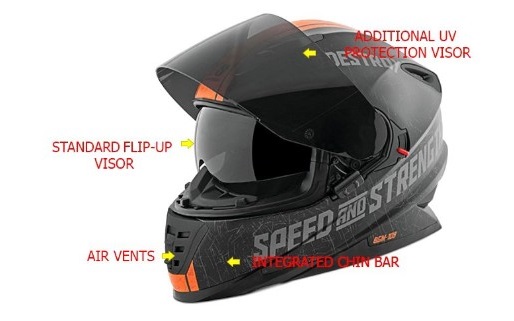
When enclosed, the helmet has side, top, and front ventilation channels for the free flow of fresh air. Although this will aid easy breathing for the rider and reduce fog-up, some of them have small switches for regulating the airflow.
2. Modular Helmets:
This helmet type has similar characteristics to the full-face helmet, except for the crash integrity and strength. The helmet has a flexible chin bar section to flip upwards whenever you want to take a break.
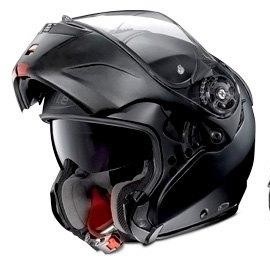
This flip will automatically give it the shape of an open-face helmet. Although the lower chin of the Modular helmet is reinforced for strength, they are separated from the other parts of the helmet. Hence, making them react differently during a crash, the helmet weighs more than the full-face helmet.
3. Open Face Helmets:
The open face helmet covers the top, back, and side of the head, leaving the front areas open. It exposes the facial areas completely to wind or breeze and has an adjustable strap for fitness around the chin. This helmet has no structural chin section; hence, it offers less protection against a crash.
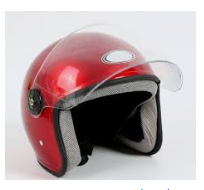
4. Dirt Bike or Off-Road Helmet:
This type of helmet is mostly for motorcyclists that engage in off-road racing. It is lightly weighted, and designed for lower-speed rides with maximum ventilation and less insulation inside it. The Off-Road helmet isn’t meant for high speed.

It doesn’t have a wind visor. Hence, riders normally put on a separate google while on it to protect their eyes. However, the helmet has a large adjustable sun peak that protects the eyes from glare and dirt sprays.
5. Dual Sport Helmet:
This type of dirt bike helmet is re-designed to be used in the streets at a moderate-high speed. It’s a helmet for on-road riding with a flip-up face shield and improved ventilation via the ducts.
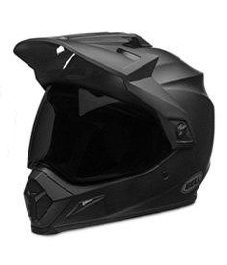
You can flip it down while smooth riding or going up, but with googles while off-roading. Unlike the Off-Road helmet, it has chin bars permanently integrated to protect the jaws.
6. Half Shell Helmet:
In simple terms, a half shell helmet is designed for style and to enjoy the cool breeze while riding. It is more valued by motorcyclists who like cruising and covers the top, upper front, rear areas, and sides.
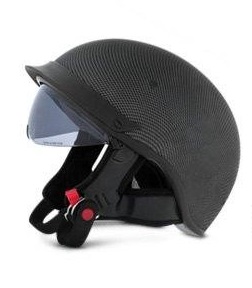
The helmet also allows you to see, hear and perceive or smell more than other helmet types. With this helmet, you need to wear goggles, sunglasses, and bandannas to protect your mouth and face from bugs and dirt.
Conclusion
This article looked at half helmet vs. full helmet outlining the variations between the two popular helmets. We also covered the six different types of motorcycle helmets that you can consider for your ride. The choice of the best helmet to ride with depends on the rider’s aim and purpose.
For example, a rider that is more safety conscious and wishes to embark on a long ride would go for the full helmet. However, the half helmet would do for a cruiser or a rider who wants to ride on a short distance for fun.
Jason, a helmet enthusiast, is the owner of HelmetsAdvisor.com shares his innovative idea that helps people get the proper knowledge of helmets and their accessories to go ahead!
Helmets are usually life-saving elements to run! That's why, an expert on helmets, Jason built this site to express his gathering knowledge and first-hand user experience over decades.
